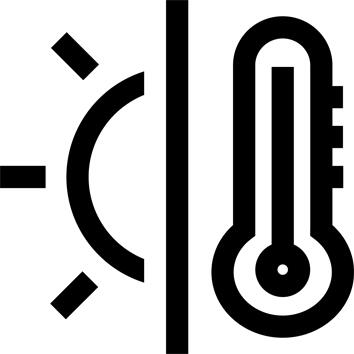Thermal insulation details
One-piece integral wet jacket 3 mm with back closure. Watertight seams thanks to GBS (GBS Glued & Blind Stitched) glued/sewn seams.
Once the thin film of water (pulled in through the ZIP) is trapped between your body and the suit, there is no water circulation, and therefore no water renewal.
It is this film of water that provides your thermal insulation.
Smooth rolled edges at wrists, ankles and neck for maximum watertightness.
Glued and sewn joints - GBS
The wetsuit's seams are waterproof, assembled using GBS (Glued and Blind Stitched): the neoprene is first glued, then sewn for maximum strength (the needle doesn't go all the way through the neoprene to prevent water infiltration).
Greater comfort when carrying diving equipment
Combination specially developed to increase the comfort of wearing the stabilizer vest and boulder. Neoprene reinforcements have been strategically placed on the support zones of the vest. 5 mm of additional neoprene positioned on the shoulders, collarbones and lower back (lumbar zones) act as cushions.
Carabiner on upper thigh for attaching accessories.
Freedom of movement / Combination threading
One-piece with separate hood (not included). Side panels and extremities in stretch neoprene (very soft, elastic neoprene) to facilitate morphological adaptability and to adapt as much as possible to different body shapes.
Leg and arm extremities are also in stretch neoprene to facilitate donning.
No seams under the armpits to facilitate arm mobility.
Adapted to women's morphology!
Neoprene wetsuits must be worn close to the body to be effective, which is why SUBEA has developed specific sizes for the female body.
These products are designed, prototyped and tested by women, for women!
Reinforcements to limit wear
The suit is fitted with reinforcements on the knees to limit wear and tear.
Prints are also present on the friction zones associated with the stabilizer vest (shoulders and lower back).
This also helps to hold it better on the body and prevent it from sliding down the sides.
Thermal performance class
This scuba diving suit offers thermal protection tested by the independent institute INPP (Marseille-France) to validate its compliance with the current standard NF EN 14225-1:2017
This suit is approved for water temperatures above 25°C.
Why use a 3 mm combination?
Even in warm waters, the body will eventually cool down (25 times faster than in air).
Using a thin 3mm wetsuit will enable you to limit this drop in temperature and enjoy your activity for longer. In addition, using a full-body suit provides almost total protection from UV rays and the underwater environment (corals, etc.).
What is a wet suit?
This type of wetsuit is the most common on the market. Its purpose is not to act as a barrier to the water, but rather to trap it and allow your body to warm it up, creating a thermal buffer between you and the outside world.
Made from neoprene - a rubber polymer filled with air bubbles - these suits come in thicknesses from 0.5 to 7 mm .
As such, they make excellent wetsuits, as they are flexible and modular.
Tips for donning your wetsuit?
Slip your foot into a plastic bag. Then tuck your leg into your wetsuit... Your foot comes out in its entirety and without snagging!
To adjust it, ask a third party to blow into your sleeve, from the wrist. The air intake inflates the inside of the neoprene suit and instantly lifts it off your skin.
You can then easily make the final adjustments.
Tips for maintaining your wetsuit
1) Soak the suit after each session in clear water, on the outside and inside.
2) Use a bactericidal solution to sanitize.
3) Rinse well in clear water.
4) Dry on a wide hanger in a shaded, well-ventilated area. Beware of the sun, as it discolors the textile parts of the suit.
Zippers can be cleaned with a toothbrush, and oiled with a suitable lubricant such as silicone grease.
Weight
XS : 1 kg
S : 1.1 kg
M : 1.2 kg
L : 1.3 kg
XL : 1.4 kg










